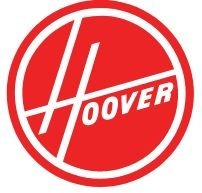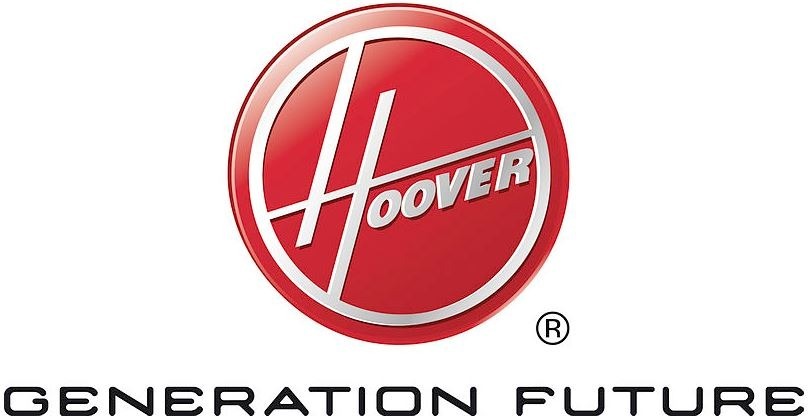Since its foundation in Ohio in 1908, Hoover has brought consumers reliable, easy-to-use products and appliances, helping them in their daily household chores and cleaning tasks. Today, it still ranks among the most trusted producers in the American market. It has also established considerable bases in other countries, such as Canada and Australia, and significant acceptance in the UK and Ireland, where vacuum cleaners are synonymous with the company’s name.
Of course, their logo is memorable, being an insignia of a trusty brand that has provided reliable machines for more than a century. Here, let’s know more about the company’s background, the creation of its interesting logo, and the brainchild of its design, helping us discover more about the Hoover brand all-in-all.
Hoover’s Brief Background
Hoover brand traced its roots from 1907 when James Murray Spangler, a janitor and occasional inventor from Ohio, devised his own version of a vacuum cleaner. He was an asthmatic who had issues with the dust from the carpet cleaner he was using at the department store where he was employed.
The resulting device was a contraption called the “suction sweeper,” which effectively collected dust. Thus, helping in the management of his ailment. An inventor of a few other items before, Spangler applied for the machine’s patent and earned it in 1908.
Eventually, Spangler noted the potential of the machine to reap enormous sales. In line with this, he produced it with the help of his son and daughter. However, it suffered from a virtual standstill, having only finished two to three units per week. With that, he sought financial assistance but finding an investor instead became a daunting task.
Fortunately, one came by in the persona of William Henry “Boss” Hoover. Hoover was the husband of Susan Troxel Hoover, Spangler’s cousin, who was impressed by the machine and told Hoover about it. Hoover, who was searching for a new financial venture apart from his sinking leather manufacturing business, requested a demonstration. Amazed by the product himself, he bought the patent from Spangler while keeping him as a partner. Hoover started the company only with six employees manufacturing vacuum cleaners at a small corner in his leather factory.
The rest was history as from a machine that no one wanted to buy, Hoover made enormous efforts, bringing the suction sweeper to the country. From running ads to organizing free trials, dealerships, and hiring door-to-door sales associates, it wasn’t long enough when sales started to boom, with almost every American household having its own vacuum. Eventually, they also ventured outside the country, establishing their name and selling their products globally.
The History of the Hoover Logo
Truth to be told, the Hoover Company didn’t have a standard logo in its first four decades. It only used the label “The Hoover” in its advertisements and machines, with the article “The” written in cursive, while “Hoover” came in a straight, serif font.
In the 1950s, Henry Dreyfuss developed the Hoover logo. More than being a logo designer, Henry Dreyfuss was an industrial design pioneer who brought some of the most iconic machines found in American homes and offices in the 20th century.
In the early 1930s, the Hoover company hired the services of Dreyfuss for a badly-needed update in their Hoover lineup. One of his first designs was the Hedlite in 1932, which he incorporated into the machine, providing it with a more pleasing, streamlined design. He continually made other designs that allowed Hoover products to keep pace in time.
His most noteworthy design was the Hoover Model 150 upright vacuum cleaner, released in 1936. It was a breakthrough in the history of vacuum cleaners, as it was the first model that had all its mechanical workings hidden from sight, seamlessly concealed in a Bakelite tear-drop styled shell. A true pioneer, Dreyfuss developed a clean, efficient and speedy design, one that was not only aesthetically pleasing but worked very well.
Dreyfuss’ final design was 1957 Convertible, after over 30 years of working with the company. Prior to that, he also developed Hoover’s red rounder logo, first unveiled in February 1950. Two of the first products that used the logo in the United Kingdom were the 1957 Hoover 638 and the 1957 Hoover 1224.
The Hoover’s logo, which Dreyfuss designed, eliminated the article “The” and retained only the word “Hoover.” It was written in white, placed inside a red circle, with white inner trim.
One important rule was that the word “Hoover” must be tilted or slanted at a 55-degree angle. The 1957 Convertible even had the 55-degree line etched in the metal to ensure that the logo would be imprinted the proper way.
No significant changes were made for the next few years aside from the size variations, from small to large, and having a contrasted version in white.
In 1968, the Hoover logo had a small makeover, replacing the circle with an ellipse. Such a move made the emblem appear flatter. Moreover, white highlights were incorporated, which gave the logo a shiny 3D effect look. It became the company’s logo 31 years, before reverting to its original circle logo in 1999. Today, Hoover uses the same Dreyfuss logo, but in red and silver colors, with a metallic sheen.
While there were no massive developments with Hoover’s logo, their contributions to the vacuum cleaning industry are indubitable. They were able to produce the first portable vacuum cleaners and countless other firsts in terms of features. Thus, heralding a new era of electrical suction-cleaning devices, far from the hefty ones present at this time.
Today, they continue to provide reliable products in both popular and premium price tags, in a wide array of types and models, from upright, stick, and canister vacuums; wet-dry, deep, and handheld cleaners; central vacuum systems, floor care items, to other cleaning solutions.
While they no longer hold the same status they had before in terms of sales due to the fierce competition in the market and despite having undergone many transitions in management, their contributions to the consumerd and the legacy they left haven’t changed – pretty much like their logo.


